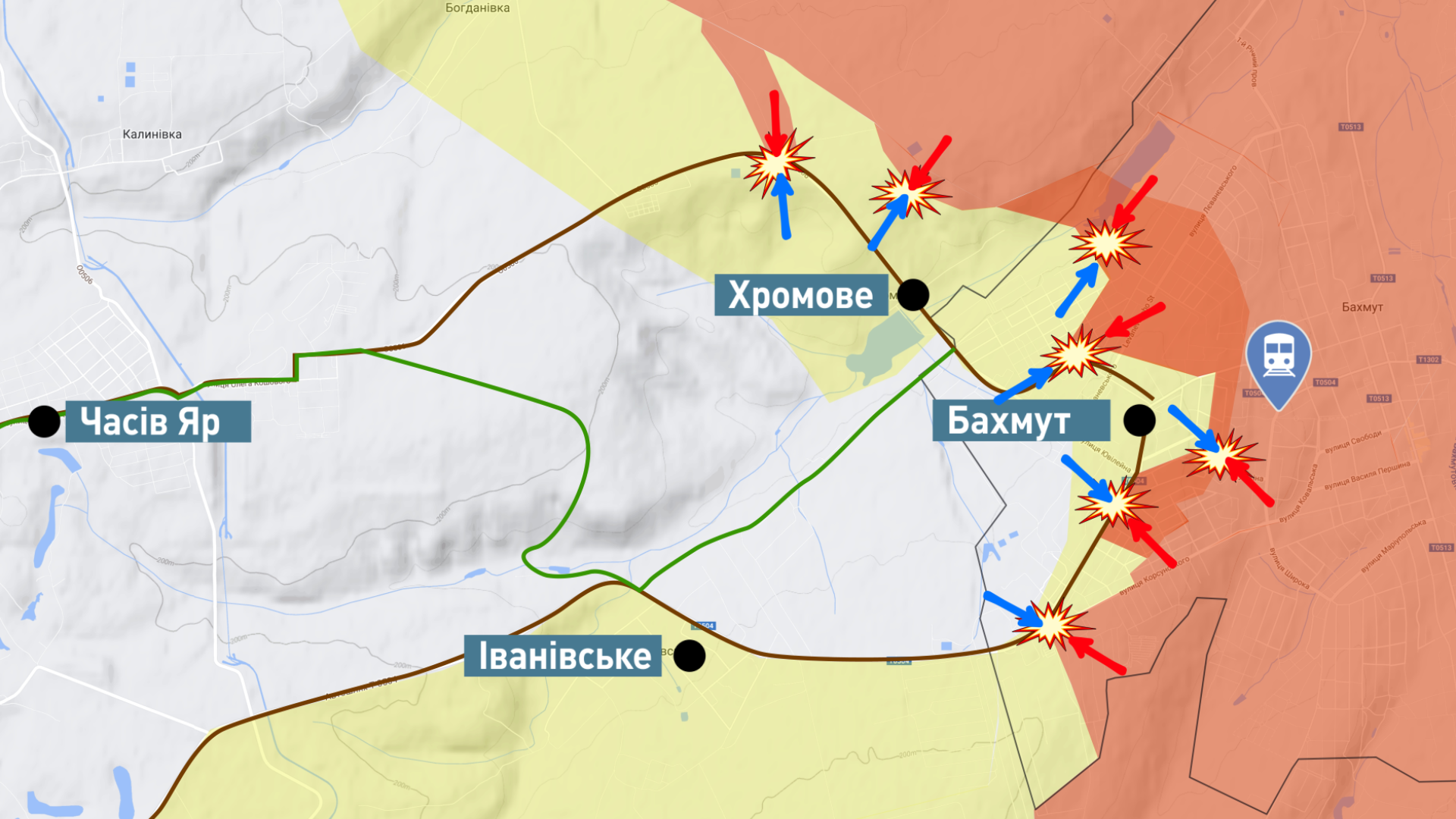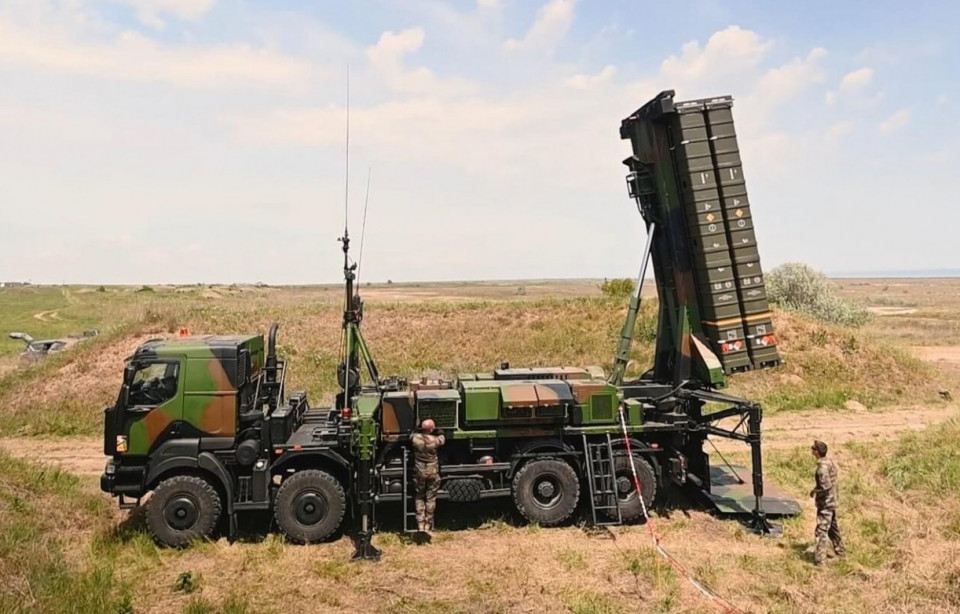
Ukraine will soon receive new air defense systems from France. Military expert Serhiy Zgurets
SAMP/T systems will significantly strengthen our air defense against Russian use of missile weapons
The situation in Bakhmut and surrounding areas
Once again, Bakhmut remains the most intense and critical section of the front line. Thanks to its robust defense, the invaders have been unable to capture this stronghold for over nine months. The enemy is exerting maximum effort to advance their position. According to Serhiy Cherevatyi, spokesperson for the Eastern Group of Forces, nearly 26,000 Russian troops, equipped with a wide range of weaponry, including aviation, are currently operating in the Bakhmut area. General Oleksandr Syrskyi, commander of the Ukrainian Armed Forces' Ground Forces, recently visited Bakhmut on April 30 and reported a challenging situation both in and around the city. However, some of our units have successfully counterattacked the enemy and forced them to abandon certain positions. The advancement of Russian troops from the flanks surrounding Bakhmut has been effectively impeded by our artillery, while our units maintain control over the western part of the city.

Within Bakhmut itself, fierce battles are raging, fought block by block and house by house. Mykola Volokhov, commander of the Terra reconnaissance unit as part of the AZOV tactical group, described the intense infantry clashes taking place in Bakhmut. The enemy is determined to capture the city at any cost, deploying overwhelming resources and utilizing all available means of destruction, including a significant number of electronic warfare systems and drones. Bakhmut has become a true hellish battleground. Fighting in this direction is exceptionally challenging due to the enemy's considerable firepower. They throw their infantry into the fight as cannon fodder, with replacements arriving as soon as one wave is eliminated. We deeply value the lives of our soldiers. We fight to live, while the Russians fight to die. Assaults persist relentlessly, day and night.
Volokhov pointed out that artillery remains a strong asset for us. A few weeks ago, there was a local shortage of certain types of ammunition, but that issue has been resolved. The enemy's situation has worsened. They are less responsive with counter-battery fire and pose a reduced threat to our infantry. This could be due to the enemy stockpiling ammunition or experiencing ammunition scarcity, as Prigozhin, the leader of Wagner, suggests, which works in our favor.
Volokhov also stressed that the Wagner fighters will eventually reach their limit. While they continue to recruit new soldiers, these individuals lack experience and require training. So, they are not as effective as units with military expertise. Ukrainian forces are exerting maximum efforts to eliminate the enemy.
He further highlighted that the enemy's electronic warfare (EW) capabilities increase the risk of losing drones. In a specific local section of the front, up to 20 Mavics may be lost daily while supporting infantry during assault operations or repelling enemy attacks. This pertains to a limited area and not the entirety of Bakhmut. The enemy infantry employs anti-drone guns but our forces are successfully carrying out their combat tasks.
Volokhov concluded that war is the art of adaptation, and the advantage goes to those who adapt first. Ukrainian defenders have already adapted, and most of the enemy's EW tactics no longer hinder our operations. Our fighters ensure the fulfillment of combat tasks regardless of weather conditions. It remains crucial to sustain our drone capabilities as long as the enemy remains active.
Ukrainian air defense and enemy missile attacks
Moving on to another equally significant topic. Following a considerable pause, the enemy has once again resorted to employing long-range cruise missiles to target our cities.
Ihor Romanenko, the founder of the Charitable Foundation "Closing the Sky of Ukraine" and a former general and deputy chief of the General Staff of the Armed Forces of Ukraine (2006-2010), highlighted that the enemy had refrained from such actions since early March. Experts widely agree that this reflects a general reduction in the availability of modern high-precision missiles within the Russian army. This includes land-based systems like the Iskander-M, sea-based Kalibr, and air-launched missiles such as the Kh-101 and Kh-555 from strategic aircraft. It is evident that the enemy is feeling apprehensive and attempting to influence the situation. Despite launching a new offensive in January, the Russian troops have not achieved significant success even at the operational level. They have only managed sporadic advancements in specific directions. Consequently, the enemy is employing fewer missiles of this type and compensating by increasing the utilization of unmanned aerial vehicles (UAVs) to improve their effectiveness. We are aware of recent Russian strikes, including a rocket attack last night. It is evident that the enemy is striving to influence these circumstances, but their capabilities are not the same as before.
The general explained that the enemy's airstrikes are aimed at assessing the effectiveness of our air defense systems, fighter aircraft, and overall air defense capabilities. They seek to gather information to enhance their effectiveness in future attacks. In modern warfare, maneuvering is crucial, and our air defense systems are actively maneuvering to adapt. To optimize our defense, it is important to have a dedicated radar reconnaissance force that can quickly identify targets without prolonged exposure of our anti-aircraft missile vehicles. By conducting aerial reconnaissance and obtaining target information in advance, the effectiveness of our anti-aircraft missiles and fighters is greatly enhanced.

Shifting the focus to air defense, it is worth mentioning that we are expecting the arrival of new air defense systems, specifically the SAMP/T from France, in the near future. It is crucial that France maintains a prompt delivery schedule, unlike previous supplies. These new systems are expected to significantly strengthen our anti-aircraft defense, particularly in light of the risks posed by the Russian Federation and its missile capabilities.
- News













































